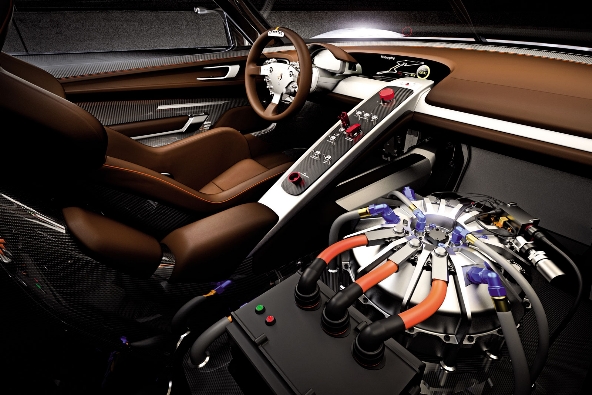Since the introduction of alternatively-fueled cars, the world has moved further and further away from producing engines that run on gasoline. Once you have cars that run on hydrogen or plug into the wall like a toaster, an internal combustion engine seems all the more antiquated. However, the fact remains that the vast majority of cars sold in the Middle East, the U.S. and Europe are still powered by these seemingly old-world engines and this dominance will persist for most of the foreseeable future.
Car manufacturers use internal combustion engines for a lot of reasons. People are used to them, there’s an infrastructure that supports them and they fit nicely with how most of our region’s inhabitants use their cars.
That’s not to say that these engines don’t have their downsides. They pollute our environment and they’re dependent on oil – which leaves other nations’ drivers subject to shifts in fuel prices, though this is not something that affects us heavily here in the Gulf.
Though the engine in the car in your driveway has a lot in common with the engines used in the earliest cars, innovations in engine technology have allowed car manufacturers to avoid some of the problems associated with petrol engines. Improvements in power, fuel efficiency and emissions allow people to drive the types of cars that they like while also reducing the amount they pollute and the money they spend on gas.
One way car manufacturers update motors is with variable valve-timing and lift. To understand how this works, you’ll need a basic understanding of how a car engine operates.
In an engine, the valves open and close to control how the air/fuel mixture enters the combustion chamber and how the exhaust exits. In most petrol engines, the vales open for the same amount of time and open the same distance regardless of how hard the engine is working. How hard an engine is working is known as its speed. Engine speed doesn’t track how fast a car’s moving down the road. Instead, engine speed refers to how fast the engine’s crankshaft is rotating. That rotation comes from the pistons in the engine’s cylinders. The faster they go, the faster the engine speed – and the harder the engine is working.
By varying the time and distance that the valves open, the engine gets just enough fuel and air for the task it’s currently performing. In fact, variable valve-timing and lift can make a petrol engine about five per cent more efficient. But, researchers have found that by heating and pressuring the fuel before it’s injected they can ignite the fuel without a spark – sort of how a diesel engine operates. This process helps it burn cleaner and more efficiently, reducing the amount of fuel the engine needs to operate.
So, even though we are far from the futuristic ideas of cars that we imagine and see in movies, we are even closer to creating an engine that is both efficient and considerate of the environment, which is ultimately the goal for the global good.



